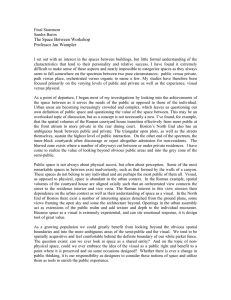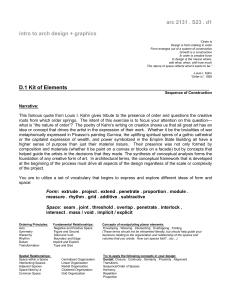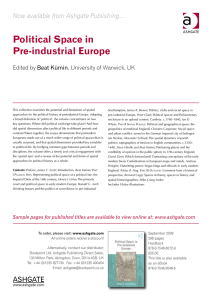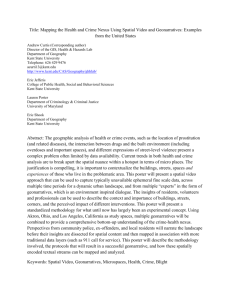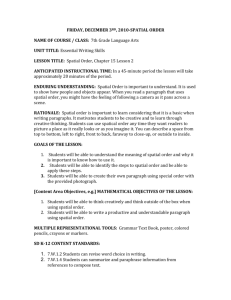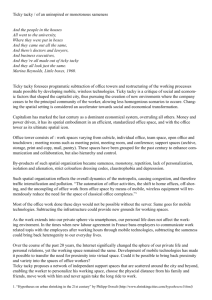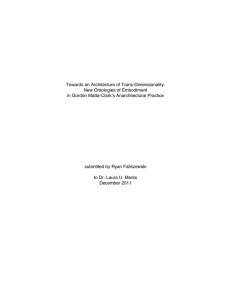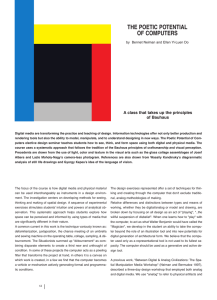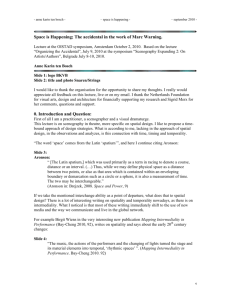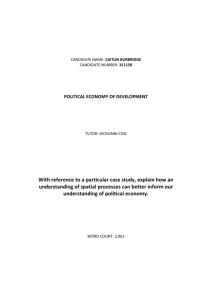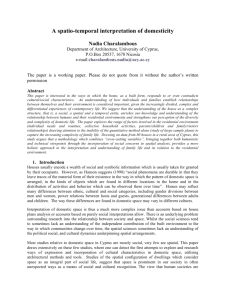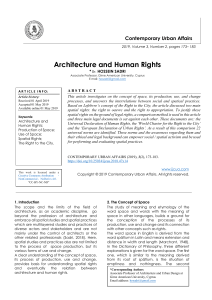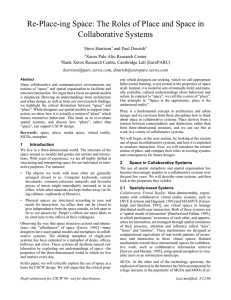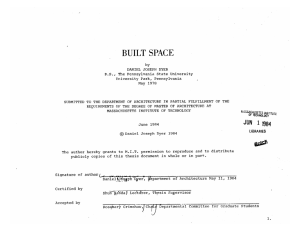Essay #1: Close-Reading Paper
advertisement
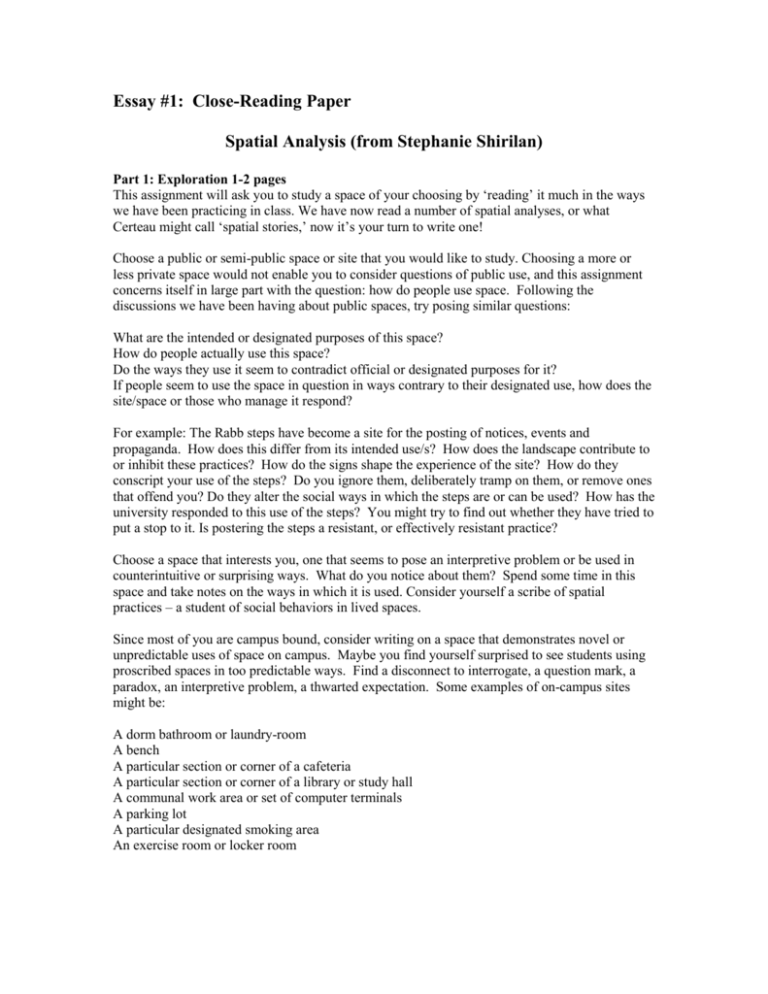
Essay #1: Close-Reading Paper Spatial Analysis (from Stephanie Shirilan) Part 1: Exploration 1-2 pages This assignment will ask you to study a space of your choosing by ‘reading’ it much in the ways we have been practicing in class. We have now read a number of spatial analyses, or what Certeau might call ‘spatial stories,’ now it’s your turn to write one! Choose a public or semi-public space or site that you would like to study. Choosing a more or less private space would not enable you to consider questions of public use, and this assignment concerns itself in large part with the question: how do people use space. Following the discussions we have been having about public spaces, try posing similar questions: What are the intended or designated purposes of this space? How do people actually use this space? Do the ways they use it seem to contradict official or designated purposes for it? If people seem to use the space in question in ways contrary to their designated use, how does the site/space or those who manage it respond? For example: The Rabb steps have become a site for the posting of notices, events and propaganda. How does this differ from its intended use/s? How does the landscape contribute to or inhibit these practices? How do the signs shape the experience of the site? How do they conscript your use of the steps? Do you ignore them, deliberately tramp on them, or remove ones that offend you? Do they alter the social ways in which the steps are or can be used? How has the university responded to this use of the steps? You might try to find out whether they have tried to put a stop to it. Is postering the steps a resistant, or effectively resistant practice? Choose a space that interests you, one that seems to pose an interpretive problem or be used in counterintuitive or surprising ways. What do you notice about them? Spend some time in this space and take notes on the ways in which it is used. Consider yourself a scribe of spatial practices – a student of social behaviors in lived spaces. Since most of you are campus bound, consider writing on a space that demonstrates novel or unpredictable uses of space on campus. Maybe you find yourself surprised to see students using proscribed spaces in too predictable ways. Find a disconnect to interrogate, a question mark, a paradox, an interpretive problem, a thwarted expectation. Some examples of on-campus sites might be: A dorm bathroom or laundry-room A bench A particular section or corner of a cafeteria A particular section or corner of a library or study hall A communal work area or set of computer terminals A parking lot A particular designated smoking area An exercise room or locker room Your space will dictate many of the kinds of questions you ask. There are different kinds of performances, displays and rituals that take place in an exercise or locker room than there are in a cafeteria. Come up with your own list of questions to ask and speculate on. If you are able to get off campus and choose to do so, you may write on any public/semi-public space that interests you in the ways noted above. Avoid writing on a space you love for the sake of describing how wonderful they are. Choose a site about which you can be both intuitive and analytical. If you want to write about Fenway or Yawkey way, look for details that disturb the kinds of monolithic narratives that we tell about them – what roles do the buskers, hawkers and panhandlers play at Fenway? If the site in question is evocative of bodily responses, don’t discount that from your analysis. If the space makes you feel claustrophobic, kenophobic, paranoid, hot, cold, dizzy, timid, etc., note why. Part 2: Spatial Analysis Essay 5-6 pages. Having garnered your evidence and observations, what conclusions can you draw? What kinds of connections can you forge? What kinds of patterns do you discern? In other words, performing the ‘method’ (Writing Analytically) as you have done since assignment 1, what kind of argument can you make about the site you have chosen? Use your prewriting and notes to form a structure of material around which you will argue for a particular thesis or reading of your chosen space.
